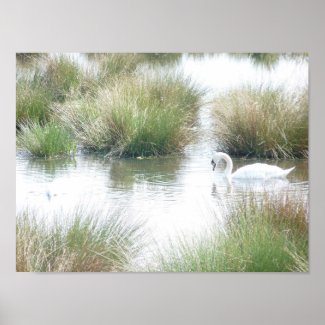Life can be busy and stressful and I find it is necessary to take time out whenever I can to connect with nature.
Being in a nature reserve like the one near us is really grounding and brings a sense of peace and serenity.
Nature reserves, more than any other place for me are a beautiful experience. The scenery is stunning and peaceful, I love the changing seasons and wildlife and being both an observer and a part of nature. Often quiet and free from traffic noise with only the lovely sounds of bird calls and wind in the trees
it is a chance to clear my mind, rejuvinate and relax.
There are many significant benefits for our mental and physical health by spending time each week, or as often as we can in this environment
Emotional Wellbeing And Mindfulness
As soon as we enter the nature reserve I feel a sense of relaxation, of letting go.
We generally do not take any tech with us except for a mobile phone which is for use only in an emergency.
Otherwise we do not look at it.
Spending this time in a natural setting reduces stress and raises our spirits. I think the combination of exercise, fresh air
and relaxing, peaceful scenery all helps to calm and clear the mind and improve mood.
In addition the beauty and wonder of being connected to nature that is something greater than ourselves
gives us a deep appreciation for life and there is always at least one unexpected surprise or amazement
on each nature walk that make us us feel a sense of wonderment being alive and inspired. On our last walk we saw a gorgeous woodpecker, heard the bitterns booming and found a rare orchid which the wardens had fenced off to protect it for example.
Physical Health Benefits Of Walking In A Nature Reserve.
When we visit the nature reserves we walk for miles, much farther than when we walk
around our town for exercise. We try to walk for an hour a day but when we go
to a nature reserve we easily walk two or three hours without even thinking about it.
Walking can be done at a gentle pace or a good hike. You can in our reserve stay on the wide main flat paths which are good for people who like or need a steady safe walk or are using a mobility aid or vehicle. There are also more narrow sloping winding paths or more challenging routes through the reserve. It can easily be a steady low impact exercise to a good workout.
This is beneficial for us on many levels such as heart health,
muscular strength, and improving general fitness levels. The fresh air free from traffic is great for our lungs
and bodies and all our senses are stimulated and relaxed at the same time.
Conservation Of Nature Reserves
The nature reserve we visit is a result of human intervention.
The wetland area used to be where heavy chemical industry was with awful pollution and toxic waste. When the industry was closed down the authorities wanted to use the space for waste disposal.
Only due to the proactive local people and nature conservation groups having a vision of a beautiful natural rescource for nature and people was the area gradually converted over years into a gorgeous nature reserve. Even before it was finished birds and mammals started to move in!
It is now so rich in birds, mammals, trees, wetland and flowers and a wonderful resource for people to enjoy and learn about nature.
Many people go there for exercise, photography and to learn about wild flora and fauna.
They run childrens outdoor classes so the next generation can learn and hopefully preserve our beautiful wetlands.
to hopefully inspire a love of wildlife and the protection and maintenance of these amazing natural resources.
Pursuing Hobbies And Interests
Someone once asked me at the Nature reserve, are you here for the walking, wildlife, flowers or photography?
It struck me then that people can gain so much in this environment.
As I took notice some people were clearly serious walkers and took this environment to walk a certain distance or time, gain fitness and enjoy the scenery.
Others were taking it more sedately, chatting with each other, pointing out beautiful scenes, showing children the wonders of nature. Sitting on the various benches and walking gently with each other taking in the lovely views and having a peaceful lovely time.
Then I noticed the photographers, some with serious pieces of kit, tripods and top of the range camera and zoom lenses to bridge cameras and mobile phones all taking notice of the world around them from the open scenes to a single flower, bird photography to the waves of the river.
The artists were set up in quiet places sketching out scenery and birds, often to me seeming in deep concentration.
The nature lovers were watching, listening, often with binoculars very quiet, very still, occasionally consulting books or phones for information loving every minute.
Many people of course combine several or many of these interests and we all enjoyed a lovely mug of hot tea or coffee in the centre at some point during our visit there, where we chatted with each other or sat in quiet revery.
I realised that one setting is enjoyed in so many respectful ways and nature gives to each of us in a way that we need it, in ways we individually appreciate it. How beautiful is that!
Fostering A Sense Of Community
We can visit the nature reserve and be quiet and alone, yet even then be a apart of something special. However if anyone wishes there is also the opportunity
to be involved in many levels from casual chatting in the observation centres, joining of walks to full on volunteering.
Group walks and guided walks to learn about the wildlife are available where you can chat to others who are also interested in nature. More structured classes are held over several weeks or regular walks on certain days where a more regular set of people attend.
You can also do regular volunteering work in the centre
or giving talks, raising awareness or helping in the gardens, whatever suits your time available and skillset.
In all these ways a common aim of loving and preserving nature providing opportunity
for social interaction either casual or committed, can lead to a sense of
community and belonging that is sometimes lacking in this modern world and fosters a sense of wellbeing.
Whether you are alone or in a family or friendship group, young or older we can all benefit from seeing and hearing beautiful wildlife, breathing fresh air, exercise, learning about nature, maybe pursing a hobby like painting or photography and sharing each others company when we want to.
The connection with people may be a brief chat about a bird sighting, the shared excitement of seeing a beautiful bird or a precious rare flower, a group of people you get to know on a deeper level via set walks or classes or a belonging as a volunteer, it all helps.
Nature Reserves For General Wellbeing
So in this way walking in a nature reserve can have a range of benefits and opportunities for our mental, emotional and physical health with a sense of belonging and community that can lead to a better quality of life overall.
We are so appreciative of our wonderful special nature reserve resource and would not be with out it
and will protect it as long as we live.
Note: The author may receive a commission from purchases made using links found in this article. “As an Amazon Associate, Ebay (EPN) and/or Esty (Awin) Affiliate, I (we) earn from qualifying purchases.”












